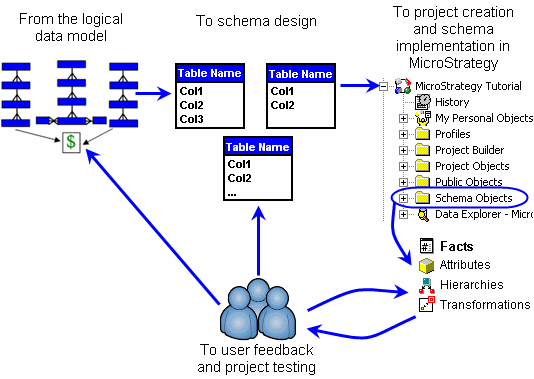MicroStrategy ONE
The Building Blocks of Business Data: Facts
Facts are one of the essential elements within the business data model. They relate numeric data values from the data warehouse to the MicroStrategy reporting environment. Facts generally represent the answers to the business questions on which users want to report.
In the MicroStrategy environment, facts are schema objects created by and shared between MicroStrategy users. The facts you create in MicroStrategy allow users to access data stored in the data warehouse. Facts form the basis for metrics, which are used in the majority of analyses and reports that users can create with MicroStrategy.
Facts and attributes are necessary to define projects. In a MicroStrategy project, facts are numeric data and attributes are contextual data for the facts. For example, you want to analyze the amount of sales at a certain store during January. In this case, the amount of sales represents the fact, and the store and month represent attributes. As the project designer, you must create projects that contain facts and attributes. Users can then use these facts and attributes as building blocks for metrics and reports.

Facts are stored in the data warehouse in fact tables. These fact tables are composed of different columns. Each cell in the columns represents a specific piece of information. When fact information is requested for a report in MicroStrategy, that column is accessed to retrieve the necessary data. This data is used to create a metric (such as profit) which is a business measure.
Facts are based on physical columns within tables in the data warehouse, as shown below.

Like other schema objects such as attributes, facts are logical MicroStrategy objects that correspond to physical columns and tables. Unlike attributes, facts do not describe data. Facts are the actual data values stored at a specific fact level. A fact entry level is the lowest set of attributes at which a fact is stored.
While creating facts is a major step in the initial creation of a project, it can often be necessary to modify and create facts throughout the life cycle of a project. The procedures to perform these tasks are discussed in the first section (Creating facts) of this chapter. The later sections discuss conceptual information on facts, as well as highlight some advanced fact design techniques and procedures.
